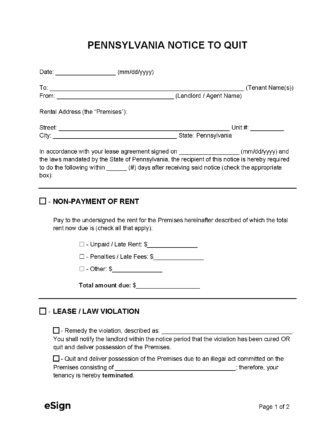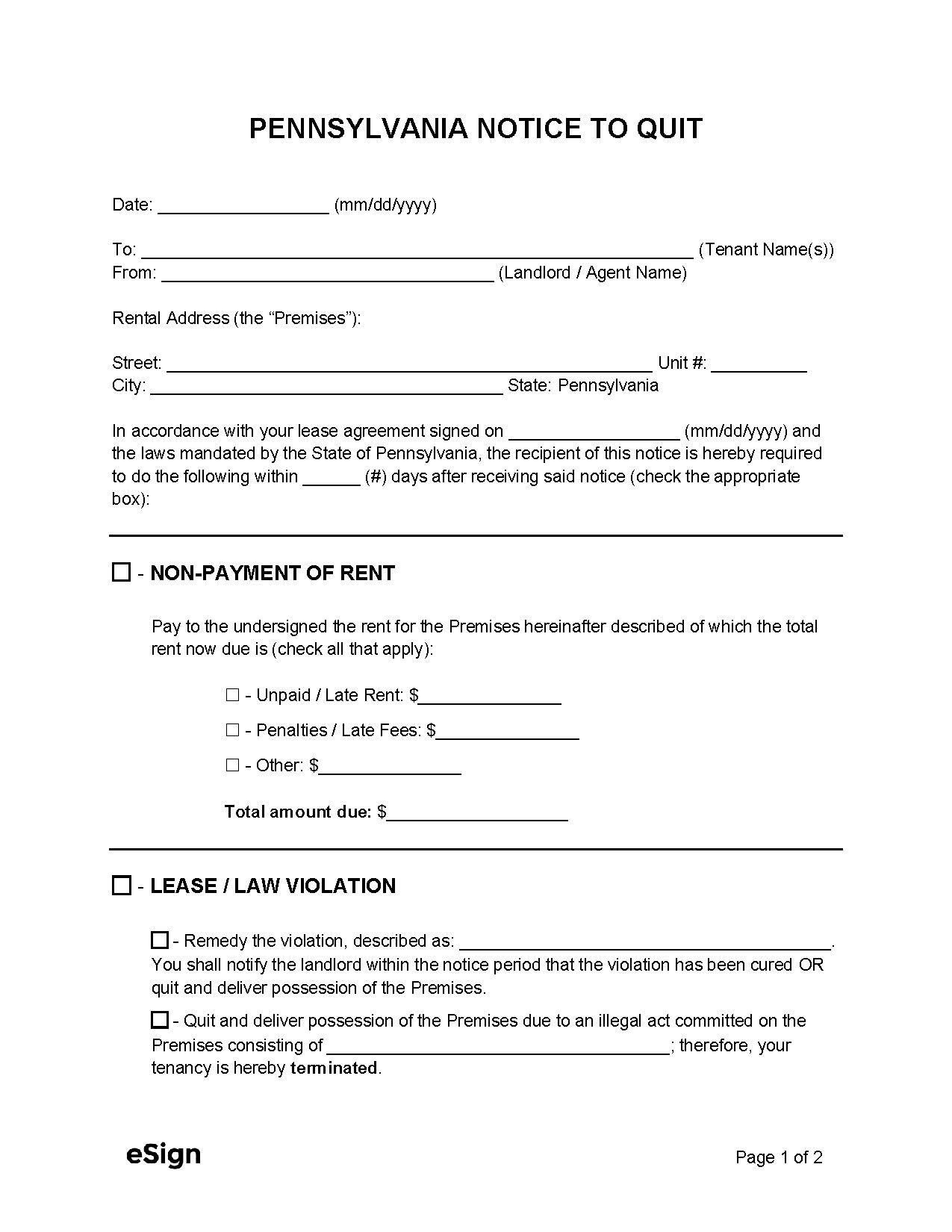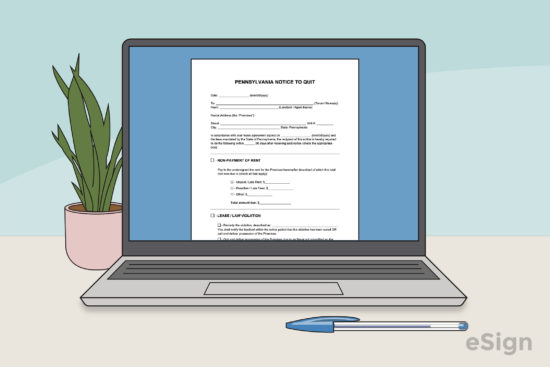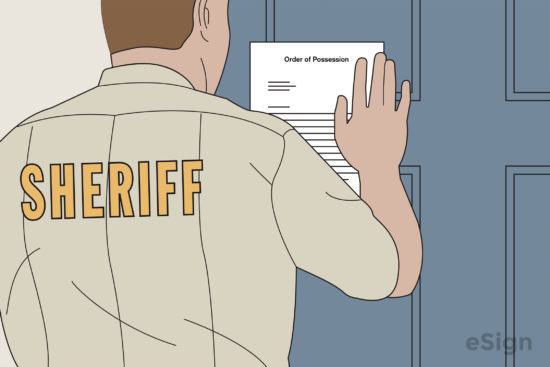Eviction Notices: By Type (5)
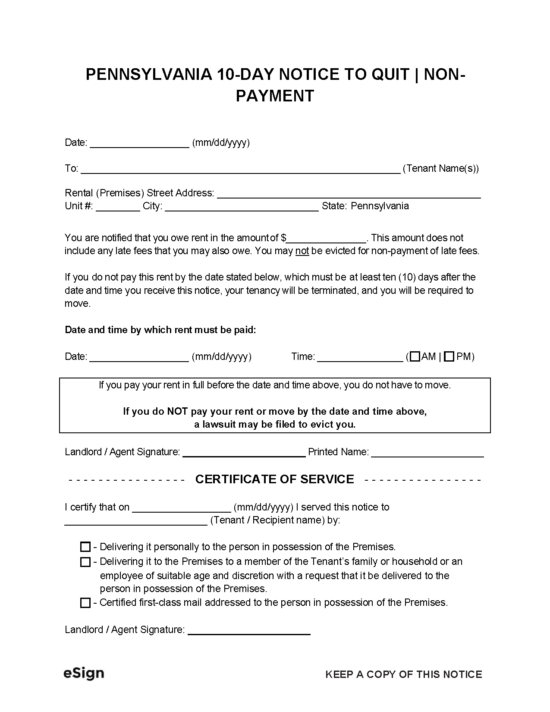 10-Day Notice to Quit | Non-Payment – Informs a tenant that they must pay their overdue rent or move out within 10 days. 10-Day Notice to Quit | Non-Payment – Informs a tenant that they must pay their overdue rent or move out within 10 days.
Download: PDF, Word (.docx), OpenDocument |
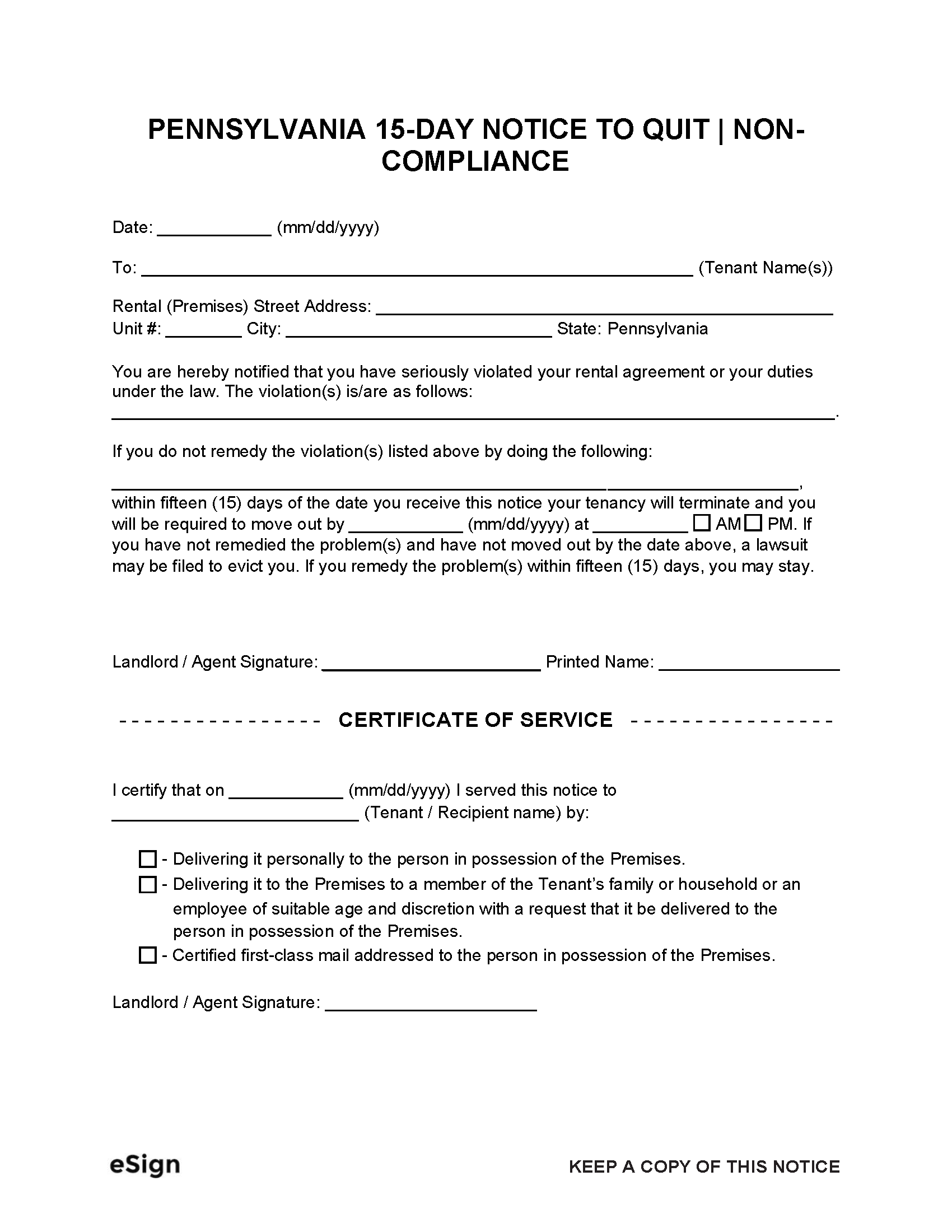 15-Day Notice to Quit | Non-Compliance – Grants a tenant 15 days to cure a lease violation or quit the premises. (For lease terms of one year or less.) 15-Day Notice to Quit | Non-Compliance – Grants a tenant 15 days to cure a lease violation or quit the premises. (For lease terms of one year or less.)
Download: PDF, Word (.docx), OpenDocument |
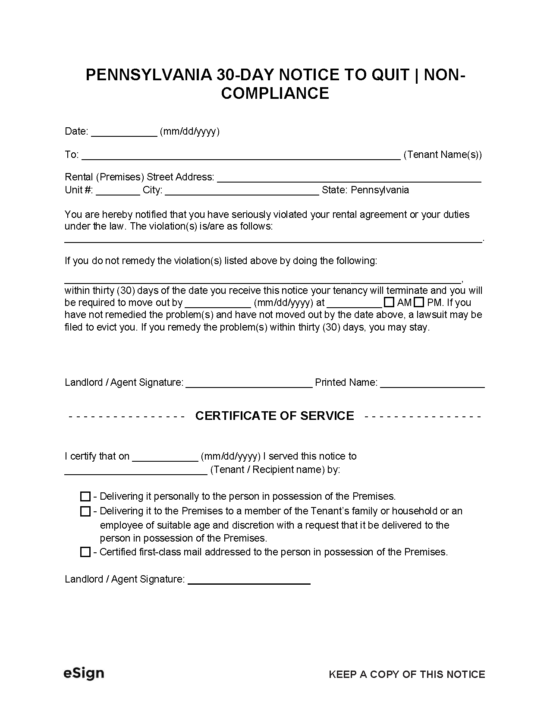 30-Day Notice to Quit | Non-Compliance – Notifies a tenant that they have broken their lease terms and must either cure the issue or vacate. (For lease terms over one year.) 30-Day Notice to Quit | Non-Compliance – Notifies a tenant that they have broken their lease terms and must either cure the issue or vacate. (For lease terms over one year.)
Download: PDF, Word (.docx), OpenDocument |
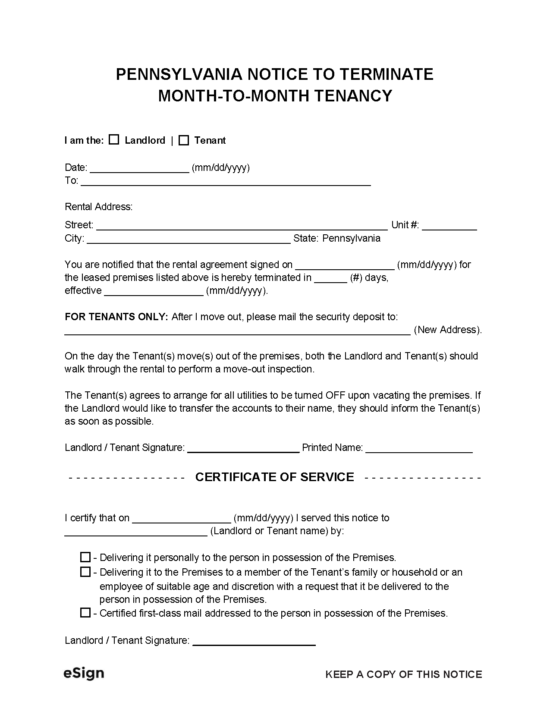 Notice to Terminate | Month-to-Month Tenancy – A document that terminates a month-to-month rental agreement. Notice to Terminate | Month-to-Month Tenancy – A document that terminates a month-to-month rental agreement.
Download: PDF, Word (.docx), OpenDocument |
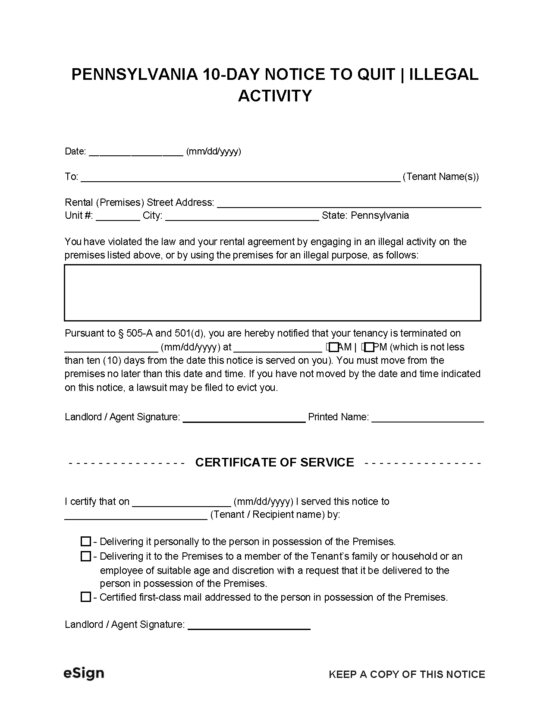 10-Day Notice to Quit | Illegal Drug Activity – Used to terminate the lease of a tenant who has engaged in illegal drug activity. 10-Day Notice to Quit | Illegal Drug Activity – Used to terminate the lease of a tenant who has engaged in illegal drug activity.
Download: PDF, Word (.docx), OpenDocument |
Notice Requirements
How to Evict a Tenant in Pennsylvania
Step 1 – Serve Notice to Quit
The eviction process begins with serving the tenant a notice to quit, informing them that their lease will terminate on the indicated date if they don’t comply with the notice terms. The notice can be served personally to the tenant or posted on the property.
Step 2 – File Complaint
After the notice period expires, the landlord can file a Landlord/Tenant Complaint with the Magisterial District Court of the county in which the property is located. The court will schedule a trial date to take place between 7 and 15 days of filing.
Step 3 – Serve Complaint
The court will arrange for a copy of the Complaint to be mailed to the tenant and give a copy to the sheriff’s office to service them directly. If there is no adult on the premises to receive the Complaint, the sheriff will post in a conspicuous place.
Step 4 – Attend Hearing
At the hearing, both parties will present their sides of the case, and the judge will render a decision (either that day or within three days). If the landlord wins, the court will enter a judgment to return possession of the property to them along with any rent and damages owed.
In some cases, the judge may issue a “Possession Granted if Money Judgment Not Satisfied,” allowing the tenant to prevent the eviction by paying the owed rent within 10 days.
If the tenant wins the case, they will be allowed to continue their tenancy.
Step 5 – Order of Possession
If the tenant doesn’t leave after 10 days of the judgment, the landlord can file a Request for Order of Possession with the court, authorizing the sheriff to evict the tenant. Once the request is approved, the court will issue an Order of Possession, which will be mailed to the tenant and provided to the sheriff to be served personally.
If the tenant does not vacate within 10 days of service, the sheriff will forcibly remove them from the property.
Court Forms + Resources
Forms
- Landlord/Tenant Complaint
- Signed by: Landlord
- Order of Possession
- Signed by: Judge
- Request for Order of Possession
- Signed by: Landlord
Resources
